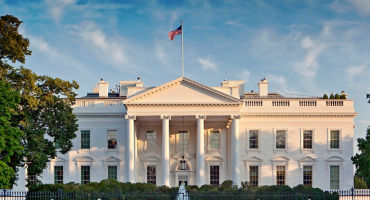This is the second part of my ongoing series on the geopolitical, foreign policy, and market consequences of the US presidential election, which focuses on a Biden 2.0. (Please also see Trump 2.0: National security and investment themes.)
Main message
In contrast to my Trump 2.0 note, the implications of a second Biden administration can largely be boiled down to four words: “more of the same.” In sum, this means a continued US industrial and foreign policy focus on “protection and promotion” of key strategic sectors, a deepening focus on coordinating these actions with allies across Europe and the Indo-Pacific, and an acceleration of coordinated national security actions through institutionalized channels (NATO, the QUAD, AUKUS, US-Japan-Republic of Korea alliance, etc.).
Key investment implications
While the geopolitical environment is likely to remain destabilized regardless of November’s result — particularly regarding China, Russia, Iran, and North Korea — a second Biden term would offer a somewhat clearer and more predictable policy roadmap for us to follow. In sum, a higher policy priority on national security, writ large, favors thematic exposures to long-term “great-power competition” trends, as well as a more disrupted and therefore more differentiated environment for us to find “winners and losers” across regional, country, asset class, and company levels. This constructive “active management strategy” backdrop is particularly suited to a variety of alternatives and private equity strategies as well.
Caveats:
- The makeup of the 2025 Congress will be a key variable in assessing this future policy backdrop. As it stands, we’re likely to see a split Congress, which adds uncertainty and slows the pace of legislation. That said, there is ongoing bipartisan support in DC for a more muscular, great-power competition framework on the Hill (especially with regard to China). A Biden 2.0, of course, would also have executive order and other policy tools to deploy outside the legislative process. Therefore, the direction of travel regarding great-power competition and the broader geopolitical backdrop remains the same as we’ve seen under Biden’s first administration.
- How the US election plays out matters greatly to domestic and geopolitical outlooks; a long, drawn-out, and deeply contested process (including the nonzero potential for significant domestic political violence) would inject far more uncertainty and risk into this picture.
- If successful in November, Biden is unlikely to finish out his second term (for what it’s worth, the current chatter among campaign insiders has him stepping down “a year or two” into his second term). That outcome would hand the US policy reins to a President Harris, who is unlikely to change course with regard to national security and great-power competition priorities.
Impacts on current (and future) conflicts:
In contrast to a robust “trade-first” approach in a Trump 2.0 that would likely employ additional tariffs and other trade measures on adversaries and some allies alike, a Biden 2.0 will likely remain more “strategic,” long term, and multilateral in nature in trade, as well as with industrial and national security policies.
This extends to climate policy, which remains one of the most critical factors for assessing future geopolitical instability, particularly across equatorial and tropical zones where the majority of conflicts are located; so, again, expect “more of the same” and, likely, an acceleration of climate-related actions given the national security imperatives.
Here’s how I view the big three geopolitical hotspots if we get a Biden 2.0:
- Ukraine/Russia: ongoing US political and military support for Kiev, though these amounts will depend on the makeup of Congress and will continue to decline; less (but not zero) diplomatic pressure on the Zelensky government to begin ceasefire talks; continued focus on strengthening NATO and US bilateral relationships across the continent; and little to no improvement in US/Russia bilateral relations, as long as Putin remains in power.
- Middle East: continuing and increasingly public friction between Biden and Netanyahu post-election; continued US support, however, for Israel’s right to self-defense; ongoing US support for a ceasefire and “two-state” solution with the Palestinians; continued active US diplomacy across the region, including with Iran, Saudi Arabia, and the Gulf States; continuing US military presence and limited military actions to “deter Tehran” across multiple fronts (Hamas, Hezbollah, Shia militias in Iraq and Syria, Houthis in Yemen, etc.); most importantly, the Middle East conflict is likely to continue, regardless of which US administration is in power, and we should prepare for elevated risk across the region for the foreseeable future
- China/Taiwan: accelerating US deterrent efforts to “turn Taiwan into a porcupine,” again working primarily through multilateral security institutions and arrangements; ongoing and increasingly public US military and diplomatic support for Taipei; and ongoing efforts to “manage the structural downturn” in US/China relations writ large, but with no change in the goal of “strategic derisking” from China. All of this, in my view, means US/China bilateral risk remains elevated for the entirety of a second Biden administration (and, likely, beyond).
A broad investment theme
This destabilized geopolitical backdrop, and especially the long-term policy approach that we’re likely to see in a Biden 2.0, should translate into ongoing opportunities across the national security space, writ large. These interlocking and increasingly dangerous geopolitical events mean that policymakers globally will continue to favor national security, often at the expense of economic efficiency.
Once again, the investments in the “great-power competition” theme should continue to outperform in a Biden 2.0, particularly if the administration deepens its focus on core security themes, including defense, defense innovation, climate adaptation, and decarbonization priorities.













